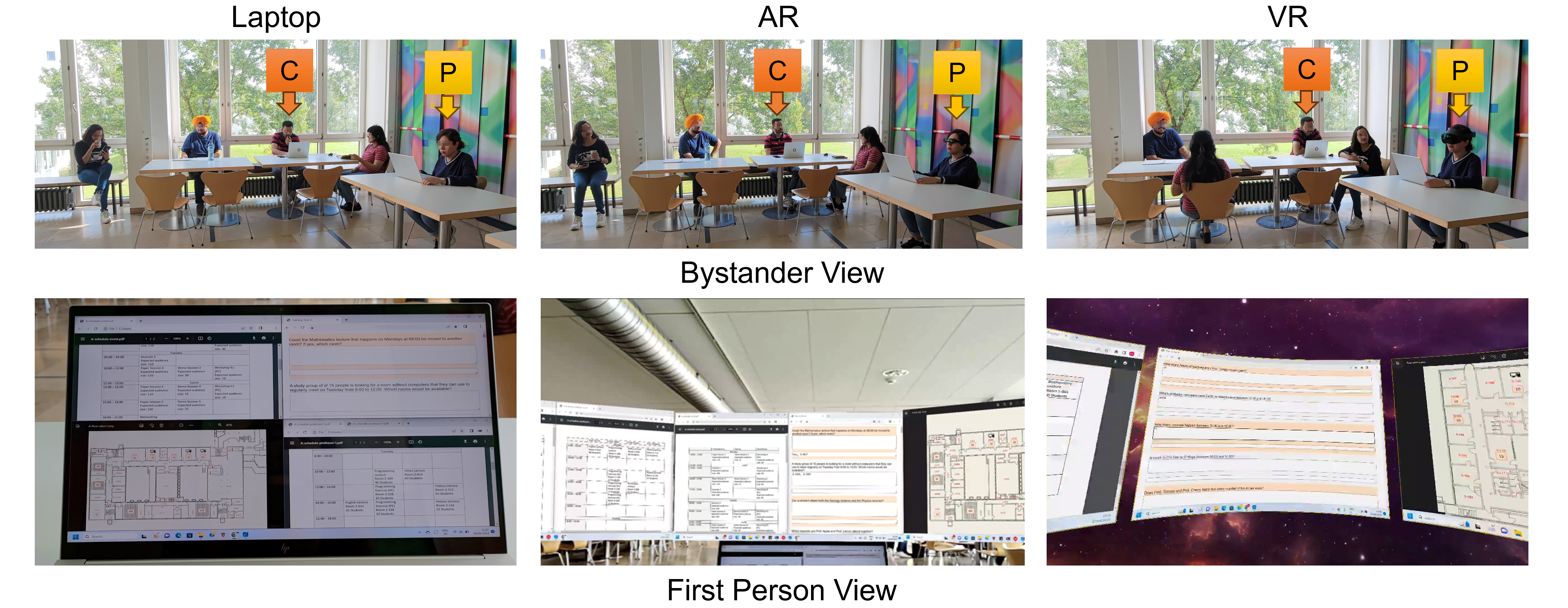Working with XR in Public: Effects on Users and Bystanders
Abstract
Recent commercial virtual and augmented reality (VR / AR) devices have been promoted as tools for knowledge work and research findings show that they can be beneficial. One benefit is the possibility to display virtual screens which could be especially helpful in mobile contexts, in which users might not have access to an optimal physical work setup. Such situations often occur in public settings, for example when working on a train while traveling to a business meeting. However, using such devices in public is still uncommon, which motivates our study to better understand the implications of using AR and VR for work in public on the user itself, and also on bystanders. Therefore, we present initial results of a study in a university cafeteria comparing three different systems: a laptop with a single screen; a laptop combined with an optical see-through AR headset; a laptop combined with an immersive VR headset.
Media

The top row shows the view of a bystander passing the area of the study for all three conditions (LAPTOP, AR, VR). C indicates the coordinator of the study and P indicates the participant. All other people are bystanders. The illustrations are reenactments of the actual situations. The bottom row shows the participant's views during the task for each condition.
Publication
Verena Biener, Snehanjali Kalamkar, John J. Dudley, Jinghui Hu, Per Ola Kristensson, Jörg Müller & Jens Grubert. Working with XR in Public: Effects on Users and Bystanders. In Adjunct Proceedings of IEEE Conference on Virtual Reality and 3D User Interfaces 2024, pp. 779-780.
preprint |
DOI
